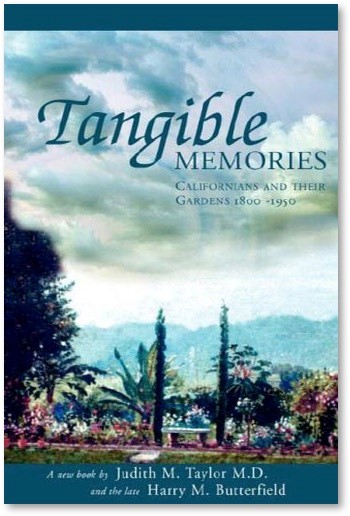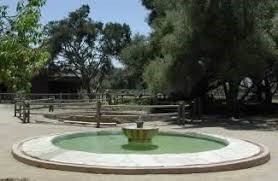I am an unashamed booster of my adopted state, California. One of its many treasures are old gardens tucked away in unexpected corners.
The gold country is not the obvious place one goes to see gardens but that is where you can find them, behind high walls or through old wooden gates. One has a hundred and fifty year old pear tree still gamely producing new leaves and shoots every spring. Some climbing roses can almost live forever even when sadly neglected. The charmingly insane folk known as “rose rustlers” who seek the original plants which came with the pioneers have found many treasures in abandoned cemeteries at the early mining settlements. No one can go back to the past but walking in one of these gardens or cemeteries comes pretty close to it.
The few people who made large fortunes in the gold rush were able to fulfill even outlandish desires. Want a huge glittering house? Done. Surround it with a glorious garden? Done. When I wrote “Tangible Memories: Californians and their gardens 1800 – 1950″ I took one step back and looked at the mechanics of these accomplishments.
None of the underpinnings of modern society were available. Everything had to be imported one way or another. Crossing the Continental United States took many months and was a very hazardous journey. The preferred route was by ship, going round to the west coast. In the 1840s and 1850s it was actually quicker to go from Australia to California across the Pacific to than from New York.
Enterprising businessmen chartered ships to carry the exciting native plants of Australia and auctioned them off on the San Francisco wharf. A hand written list of what came in one of those voyages survives in the California Historical Society.
By 1851 at least one Massachusetts nurseryman, Colonel J J Warren, had set up shop in the rudimentary city of Sacramento. He was the first person to take camellias west. Others followed him. Camellias now look as if the state were their native place but most of them originate in East Asia. Think of their journeys and hold on to that thought. It was the germ of my next book. So many exotic plants were imported into the United States, not just California, that by 1870 they dominated the whole floral industry
Check out another article by Dr. Judith Taylor here

























